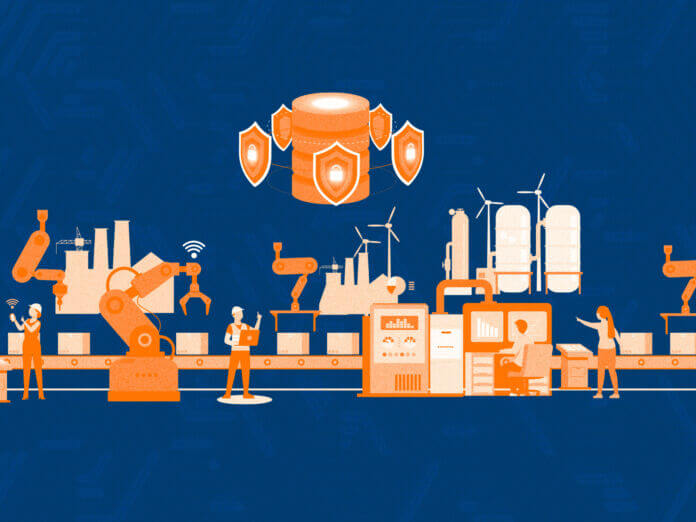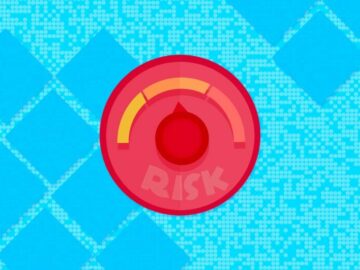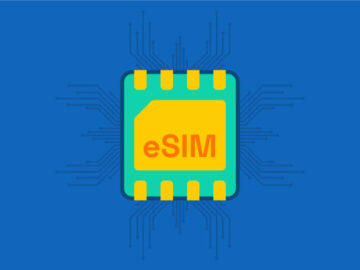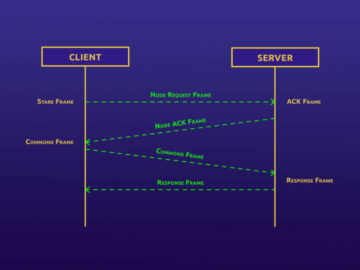
The Industry 4.0 market size is forecast to grow from USD 94.42 billion in 2023 to USD 241.58 billion by 2028. But in its early stages, 88 percent of market leaders in various industries didn’t fully grasp the business models and long-term impacts of industrial IoT technology solutions on their industries.
Fast-forward: by the end of 2022, Industry 4.0 adoption will have witnessed big growth. 72 percent of industries have already begun working on their plans to implement this technology or have successfully done so.
Still, having second thoughts on whether or not to implement Industry 4.0? Let’s walk through the importance of Industry 4.0 and how it shapes your industry.
Understanding Industry 4.0
Technology is becoming the right hand, especially when it comes to businesses. Industry 4.0 is one such revolution. Industry 4.0 integrates intelligent digital technologies into manufacturing and industrial processes.
It mainly has a set of technologies, including IoT networks, cognitive computing, robotics, and automation, that help the industry communicate, analyze data, and make smart decisions.
Since its inception, Industry 4.0 has been revolutionary. It makes things work better, cheaper, and faster. With this technology, businesses can do their work better, adapt to changes faster, and make products that are more customized for customers. So, this change creates scope for innovation in existing businesses.
Industrial IoT Solutions Driving Transformation
IoT plays a crucial role in driving the Industry 4.0 transformation by enabling connectivity, data-driven insights, predictive capabilities, and optimization across various aspects of manufacturing and supply chain operations.
For instance, let’s assume that two machines are functioning in a factory, each working in its bubble. With IoT, it’s like giving each machine a smartphone where they can communicate and share information.
But it’s not just about the machines. The IoT also connects you to your products. You can track them as they move through the factory and even after they leave. This helps you ensure quality, manage inventory, and understand what your customers want.
What Does Industrial IoT Mean?
While the main focus of IoT is to enhance convenience, efficiency, and connectivity in daily life, including electronics, smart home appliances, and gadgets, it specifically targets industrial environments, including manufacturing facilities, energy utilities, transportation systems, infrastructure, etc., and hence it’s referred to as Industrial IoT.
IIoT is nothing but a subset of IoT, which means it is specially designed for industrial IoT solutions and applications. IIoT uses connected devices and sensors to monitor, collect, and exchange data in industrial settings.
This type of setup greatly helps industries by providing real-time insights, predictive analytics, and remote monitoring, ultimately optimizing operational efficiency.
IIoT Enhances Connectivity and Automation
IIoT increases connectivity and automation in industrial settings through the integration of smart devices, sensors, and systems. Here’s how it works:
Device Interconnectivity
It allows various devices and machines to communicate and share data with the help of sensors, controllers, and machinery across different parts of the industrial environment.
Data Collection and Sharing
IIoT devices continuously collect data from sensors embedded in machinery, equipment, and production lines. But what’s the use? Operators can monitor the performance and status of these assets/machinery in real time via this data.
Wireless Communication Protocols
If you wonder how the collected data is shared on the internet or local network, IIoT does it via wireless communication protocols such as Wi-Fi and Bluetooth.
Cloud Computing and Edge Computing
IIoT influences cloud computing platforms and edge computing devices to process, study, and store extensive amounts of data generated by connected devices.
Automation and Control System Integration
IIoT integrates with existing automation and control systems. This streamlines operations by enabling communication and coordination between different systems.
Predictive Maintenance and Optimization
With predictive maintenance, continuously monitor equipment performance and health indicators in real-time. This helps in lowering downtime and maintenance costs and optimizing equipment lifespan.
Smart Manufacturing and Supply Chain Management
Want real-time visibility of production processes, inventory levels, and logistics operations? IIoT makes it possible by adding smart sensors and connected devices that provide accurate visibility.
Real-World Examples of IIoT Applications
Here are a few real-world examples of IoT applications:
Amazon has IIoT in its warehousing and logistics departments. Amazon has drones and wi-fi-connected Kiva robots for the locating and delivering of a product from the shelves of the warehouse to the employee. This application cut down on their application costs.
John Deere has deployed IoT in its self-driving tractors with the help of GPS technology. These tractors are accurate up to 2 centimeters. This helps the company with the predictive maintenance of tractors.
Common Challenges in Implementing Industrial IoT
High Upfront Cost
There’s no doubt that IIoT streamlines processes improve manufacturing efficiencies, and reduces costs through asset management, access to business intelligence, etc.
Yet, installing a complete setup is expensive, especially when a company lacks a clear idea of what kind of ROI to expect initially. In addition, post-installation requires highly skilled resources to monitor and maintain the performance.
Internet Connectivity
The lifeblood of IIoT is the internet. However, studies present the opposite situation. 85 percent of machines in factories globally are not connected or unable to collect data and transmit it to the center for analysis.
Also, the internet is not available everywhere at the same speed, which poses one of the biggest challenges in IIoT deployment.
However, as per recent reports, global IoT connections are growing fast. Recent studies predict that there will be 25.44 billion IoT devices by 2030. This means IoT in industries will also grow.
Secure Data Storage and Management
International Data Corporation estimates that by 2025, global data volume will touch 175 zettabytes.
IIoT mainly operates based on data. Huge data volumes created by your connected assets—let’s say, in a manufacturing plant—must be converted into insights. These insights help you make smart decisions.
However, this demands hefty data storage and management. Also, it demands a mix of edge computing and centralized cloud-based computing to effectively control the fleet of devices.
Reliability and Resilience
IIoT systems are expected to work reliably in harsh industrial environments and under challenging conditions. Thus ensuring uptime, fault tolerance, and resilience against disruptions to prevent costly downtime and operational inefficiencies. However, errors can occur and disrupt the flow, either operationally or environmentally.
Future Trends in Industry 4.0
The technologies are emerging in full power and shaping the future of a more autonomous lifestyle. These aren’t just limited to IoT and AI, but a wave of unexpectedness will occur, which will ultimately make businesses way more efficient. The insights of the business provided by technology are the game changer for now, but who knows what the next step will be?
Industrial IoT solutions have brought a revolution to industries and changed how they operate. Machines and systems are made more intelligent, efficient, and incredibly capable of delivering outstanding results in terms of productivity.
With IIoT, factories can now easily predict when equipment might fail before it does. This greatly helps in saving time and money. Plus, businesses can gather mountains of data and turn it into valuable insights for better decision-making.
In short, IIoT is more about connecting devices. It’s powerful enough to transform entire industries and make them more competitive and future ready.
- SEO Powered Content & PR Distribution. Get Amplified Today.
- PlatoData.Network Vertical Generative Ai. Empower Yourself. Access Here.
- PlatoAiStream. Web3 Intelligence. Knowledge Amplified. Access Here.
- PlatoESG. Carbon, CleanTech, Energy, Environment, Solar, Waste Management. Access Here.
- PlatoHealth. Biotech and Clinical Trials Intelligence. Access Here.
- Source: https://www.iotforall.com/how-industrial-iot-solutions-can-drive-industry-4-0-success
- :has
- :is
- :not
- :where
- $UP
- 1
- 175
- 2%
- 2022
- 2023
- 2025
- 4
- 42
- 58
- 72
- a
- About
- access
- accurate
- across
- adapt
- adding
- addition
- Adoption
- After
- against
- AI
- allows
- already
- also
- Amazon
- amounts
- analysis
- analytics
- analyze
- and
- appliances
- Application
- applications
- ARE
- AS
- aspects
- asset
- asset management
- assume
- At
- Automation
- autonomous
- available
- based
- BE
- becoming
- been
- before
- begun
- Better
- between
- Big
- Biggest
- Billion
- bluetooth
- brought
- bubble
- business
- business intelligence
- business models
- businesses
- but
- by
- CAN
- capabilities
- capable
- Center
- centralized
- chain
- challenges
- challenging
- change
- changed
- Changer
- Changes
- cheaper
- clear
- Cloud
- cloud computing
- cognitive
- Cognitive Computing
- collect
- collected
- collection
- comes
- communicate
- Communication
- company
- competitive
- complete
- computing
- conditions
- connected
- connected devices
- Connecting
- Connections
- Connectivity
- connects
- continuously
- control
- convenience
- converted
- coordination
- CORPORATION
- costly
- Costs
- created
- creates
- crucial
- Customers
- customized
- Cut
- daily
- data
- data storage
- data-driven
- Decision Making
- decisions
- delivering
- demands
- departments
- deployed
- deployment
- designed
- Devices
- different
- digital
- digital technologies
- Disrupt
- disruptions
- do
- does
- done
- doubt
- down
- downtime
- drive
- driving
- Drones
- each
- Early
- easily
- Edge
- edge computing
- effectively
- efficiencies
- efficiency
- efficient
- either
- Electronics
- embedded
- emerging
- Employee
- enabling
- end
- energy
- enhance
- Enhances
- enough
- ensure
- ensuring
- Entire
- Environment
- environmentally
- environments
- equipment
- Errors
- especially
- estimates
- etc
- Even
- everywhere
- examples
- exchange
- existing
- expect
- expected
- expensive
- extensive
- facilities
- factories
- factory
- FAIL
- FAST
- faster
- fault
- few
- FLEET
- flow
- Focus
- For
- Forecast
- from
- full
- fully
- functioning
- future
- Gadgets
- game
- game-changer
- gather
- generated
- Giving
- Global
- Globally
- gps
- grasp
- greatly
- Grow
- Growing
- Growth
- hand
- Have
- having
- Health
- hefty
- help
- helps
- hence
- highly
- Home
- How
- However
- HTML
- HTTPS
- huge
- idea
- Impacts
- implement
- implementing
- importance
- improve
- in
- inception
- Including
- Increases
- incredibly
- Indicators
- industrial
- Industrial IoT
- industries
- industry
- industry 4.0
- inefficiencies
- information
- Infrastructure
- initially
- Innovation
- insights
- installing
- instance
- Integrates
- integration
- Intelligence
- Intelligent
- Internet
- into
- inventory
- iot
- iot devices
- IT
- ITS
- jpg
- just
- Kind
- knows
- lacks
- leaders
- Leave
- levels
- Life
- lifeblood
- lifespan
- lifestyle
- like
- Limited
- lines
- local
- locating
- logistics
- long-term
- lowering
- machine
- machinery
- Machines
- made
- Main
- mainly
- maintain
- maintenance
- make
- MAKES
- manage
- management
- manufacturing
- Market
- max-width
- mean
- means
- might
- mix
- models
- money
- Monitor
- monitoring
- more
- more efficient
- move
- network
- networks
- next
- no
- nothing
- now
- occur
- of
- on
- ONE
- operate
- operates
- operational
- Operations
- operators
- opposite
- optimization
- optimizing
- or
- outstanding
- parts
- per
- percent
- performance
- plans
- Platforms
- plato
- Plato Data Intelligence
- PlatoData
- plays
- plus
- poses
- possible
- power
- powerful
- predict
- predictive
- Predictive Analytics
- present
- prevent
- process
- processes
- Product
- Production
- productivity
- Products
- protocols
- provide
- provided
- providing
- quality
- ready
- real
- real world
- real-time
- recent
- reduces
- referred
- remote
- Reports
- requires
- resilience
- Resources
- Results
- Revolution
- revolutionary
- right
- robotics
- robots
- ROI
- Role
- same
- saving
- say
- scope
- Second
- self-driving
- sensors
- set
- settings
- setup
- shapes
- shaping
- Share
- share information
- shared
- shelves
- Short
- situation
- Size
- skilled
- smart
- Smart home
- smartphone
- So
- Solutions
- specially
- specifically
- speed
- stages
- Status
- Step
- storage
- store
- streamlines
- studies
- Study
- success
- Successfully
- such
- supply
- supply chain
- system
- Systems
- targets
- Technologies
- Technology
- terms
- that
- The
- The Future
- their
- Them
- There.
- These
- they
- things
- this
- Through
- Thus
- time
- to
- tolerance
- touch
- track
- Transform
- Transformation
- transmit
- transportation
- Trends
- TURN
- two
- type
- Ultimately
- unable
- under
- understand
- uptime
- USD
- use
- uses
- utilities
- Valuable
- various
- via
- visibility
- volume
- volumes
- walk
- want
- Warehouse
- Warehousing
- Wave
- Way..
- What
- when
- whether
- which
- WHO
- Wi-fi
- will
- wireless
- with
- witnessed
- wonder
- Work
- working
- works
- you
- Your
- zephyrnet








